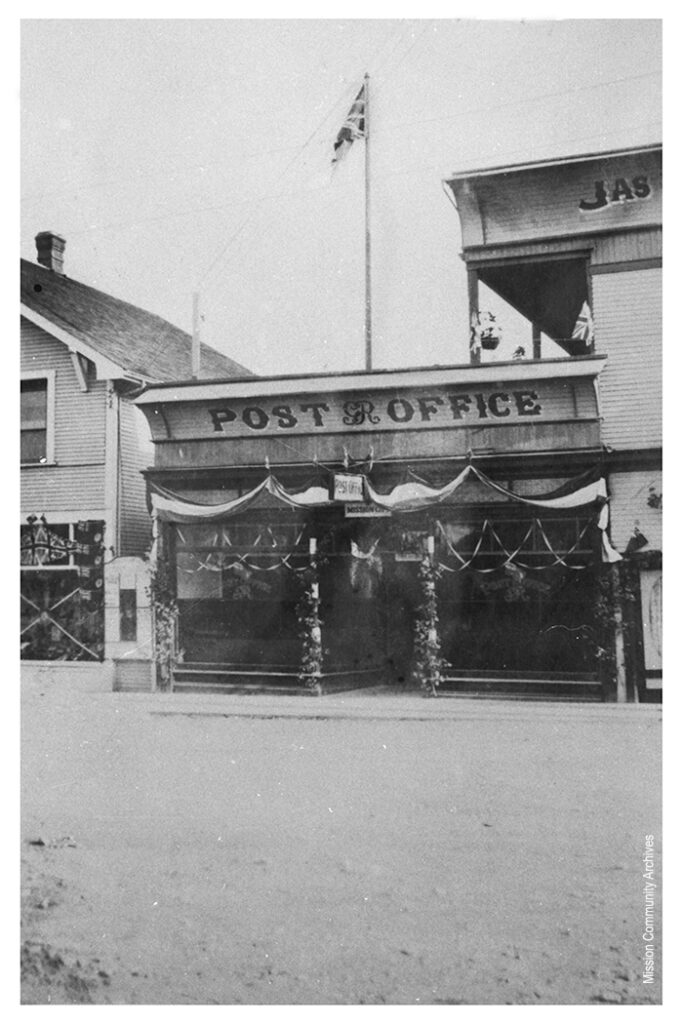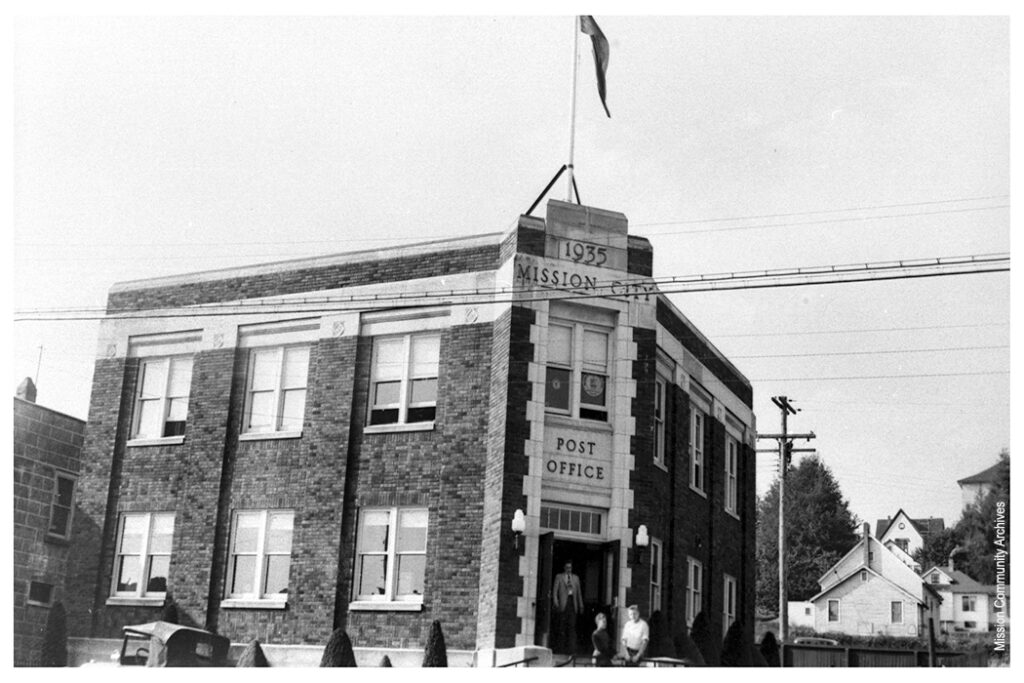
The Post Office provided an essential service for many decades prior to, during, and after the Great Depression. The building of the Post Office, completed in 1935, brought to Mission quite a sizable upgrade over the previous building. Post and mail was still a central form of communication for many people to stay connected with those all around the world, and having an organized postal service allowed a community to progress that much quicker.
The Plumridge family would be synonymous with post in this era as father and son occupied the position of postmaster of Mission for 52 consecutive years from 1904-1956. The post was serious business in this time, the local post carrier for a route retiring was worthy of getting written about in the newspaper.

Post Office in 1927 
Post Office by 1935
The name Plumridge has left its mark on Mission forever through their work at the post office as postmasters, and was commemorated with the naming of a street after the family. In a neat bit of trivia you can see for yourself at home, if you look at the location of the Mission Post Office on a map, on the corner of First and Welton, in the same location since being built in 1935, and draw a line directly North, the line intersects with Plumridge Avenue just North of 7th Avenue.
The Post Office itself would also be nicknamed by Mission residents as “Bennett’s monument” after prime minister R.B. Bennett. The building had been federally funded, and while it may have been a much needed upgrade over past post offices, the expenditure seems like it could have gone towards relief for those who needed it.
British Influence
As we saw earlier in the decade with the renaming of some of its streets, Mission was concerned with how it was coming by and displaying its identity. It took clear decisions to show some distance from American influence. Mission however did embrace its British roots. Canada during the Great Depression did not have its famous red maple leaf flag yet. It did have the Canadian Red Ensign flag as it was known. Yet the Post Office, like the Legion hall, and municipal hall chose to fly a British Union Jack as its flag, not the Red Ensign. While Mission was figuring out from who it was to take direction in shaping itself, through Missions institutions flag choice, it is hard to miss where Mission saw its roots and guidance. British identity was perhaps more prevalent than a Canadian identity in Mission at the time, or perhaps Missionites did not see a difference between the two.